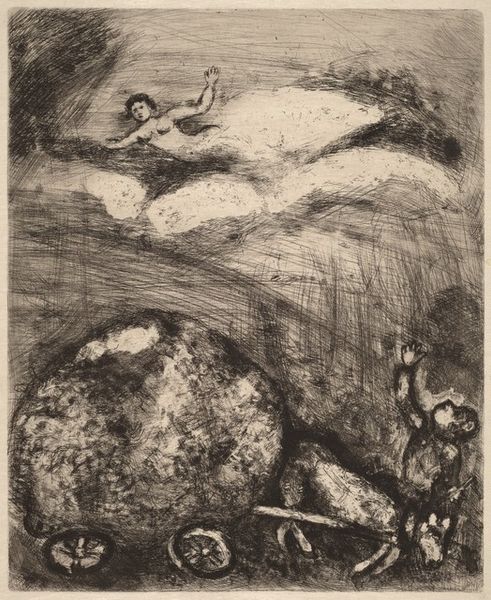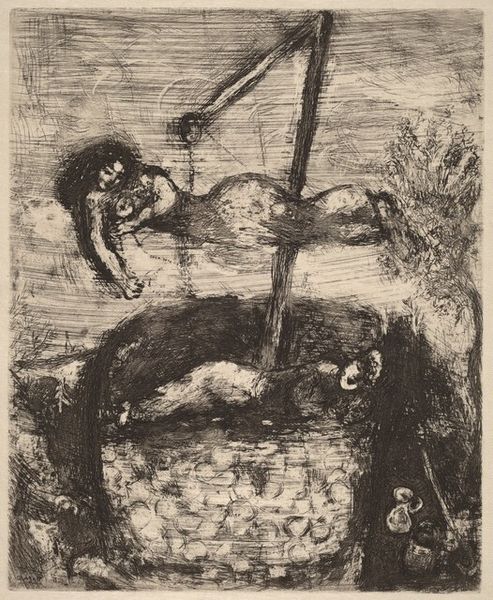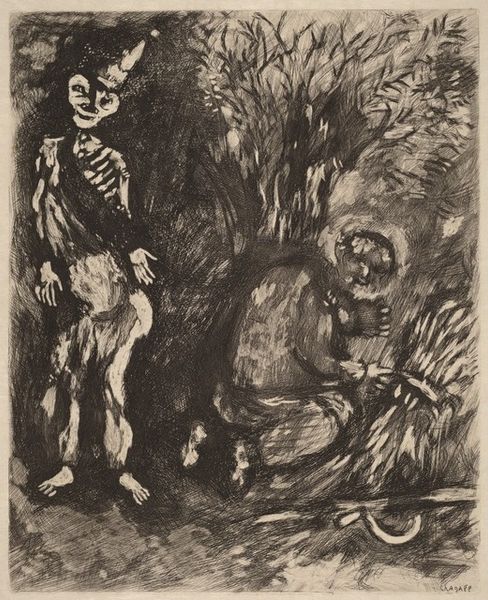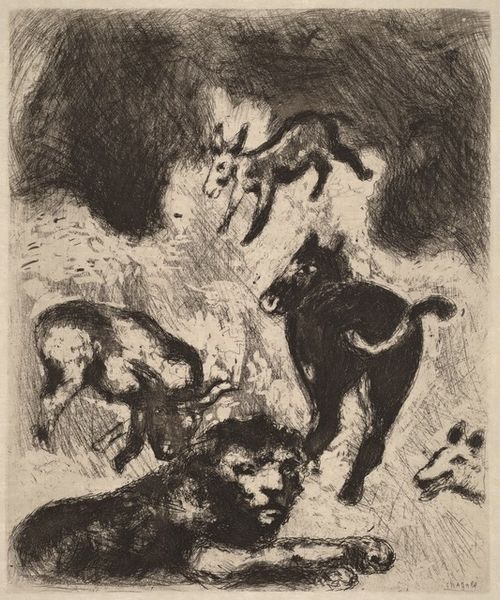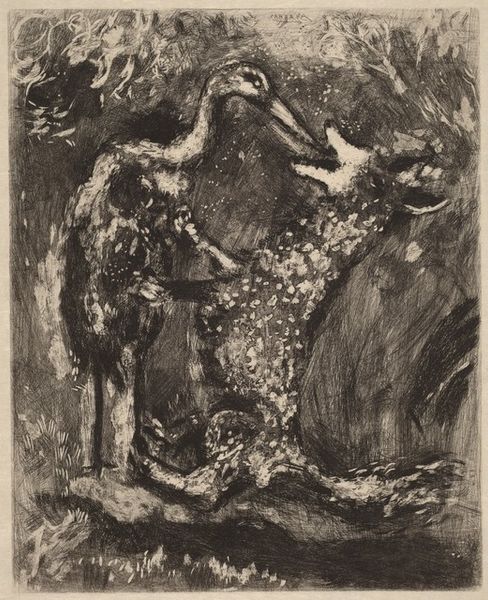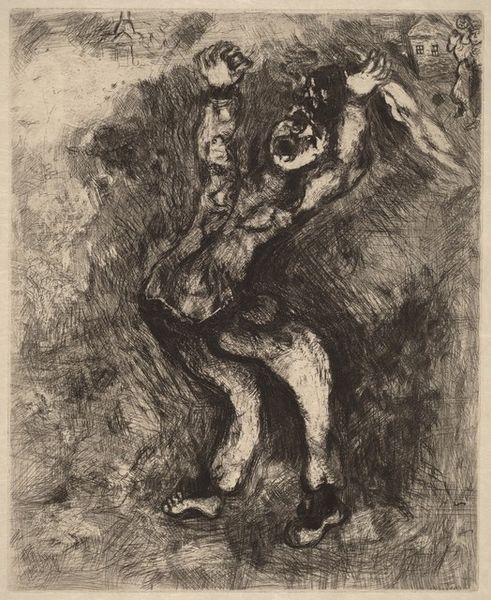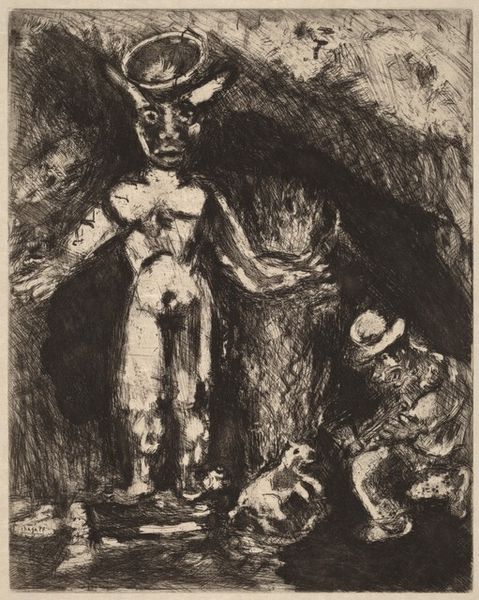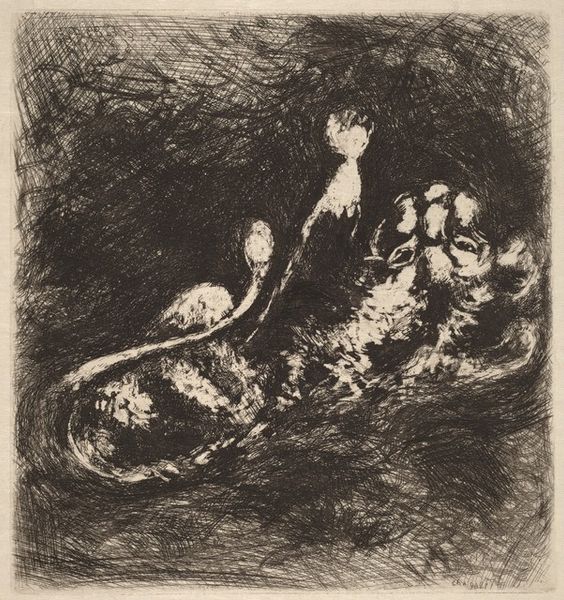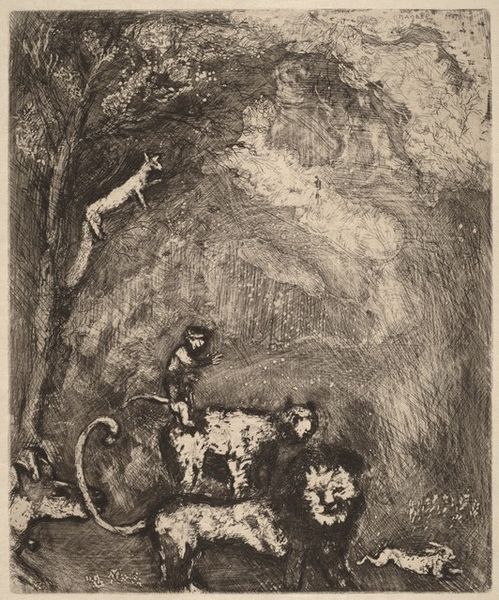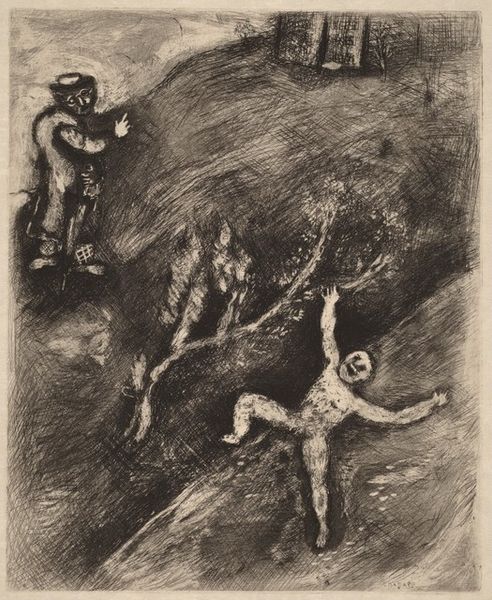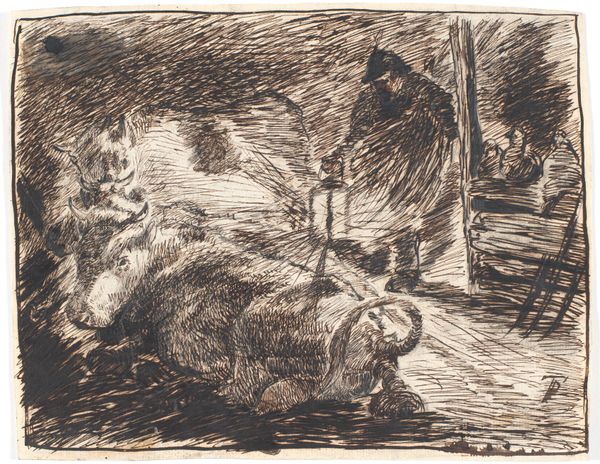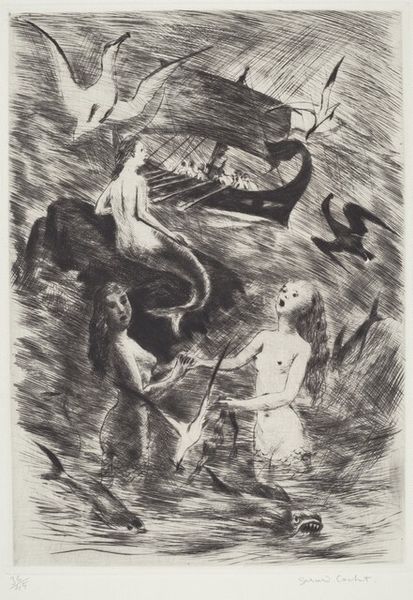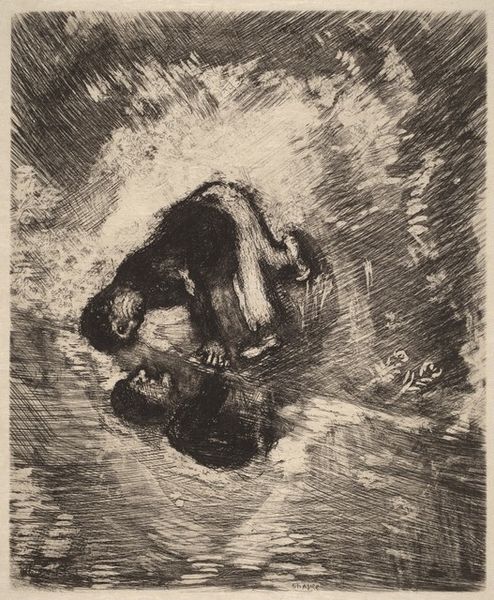
drawing, print, etching
#
pencil drawn
#
drawing
#
narrative-art
# print
#
etching
#
figuration
#
pencil drawing
#
expressionism
Copyright: National Gallery of Art: CC0 1.0
Curator: Welcome, I'm excited to share Marc Chagall's etching, "The Drunkard and His Wife," created between 1927 and 1930. Editor: It strikes me immediately as a descent into darkness. The oppressive, almost frantic hatching evokes a sense of stifling enclosure and inescapable sorrow. Curator: The expressive lines create a chaotic, unbalanced composition. The figure of the wife seems almost spectral, a counterpoint to the heavy, slumped form of the drunkard. I am drawn to her exaggerated gesture, so fraught. What is she saying or demanding? Editor: Well, consider the symbolic weight of the figures. The drunkard represents a broken promise, the loss of control. His position speaks to the destructive nature of addiction, wouldn't you agree? But look at the wife, isn't she a symbol of resilience in the face of suffering? She stands amid what looks like piles of dirty linens, the mundane world she has to face. Curator: I appreciate that reading, though, formally speaking, I see how the contrast between the densely worked areas and the sparse highlights emphasizes the inherent instability within the composition. Light plays a vital role, almost aggressively breaking up the pictorial plane. Editor: The lamp, flickering weakly above them, underscores this instability. It’s a fragile source of hope in a space that otherwise seems devoid of any such thing. The figures in this setting evoke familiar images of home transformed by addiction. Curator: The line work itself is crucial, too, it embodies a visual language akin to the emotional turmoil the figures are meant to embody. The texture of the etching creates a visual field of intense emotion, reflecting Chagall's wider engagement with expressive form. Editor: He certainly had an incredible talent for extracting emotional resonance from visual images. It’s a stark depiction, but I am left to wonder about their story. The scene speaks to the personal and also serves as a potent symbol of universal struggles. Curator: Ultimately, Chagall asks us to question the fragility of domesticity. By exploring the relationship between line and emotion he invites viewers into a realm of existential concern. Editor: A world rendered in shadows. I found it all profoundly sad but somehow strangely familiar.
Comments
No comments
Be the first to comment and join the conversation on the ultimate creative platform.
